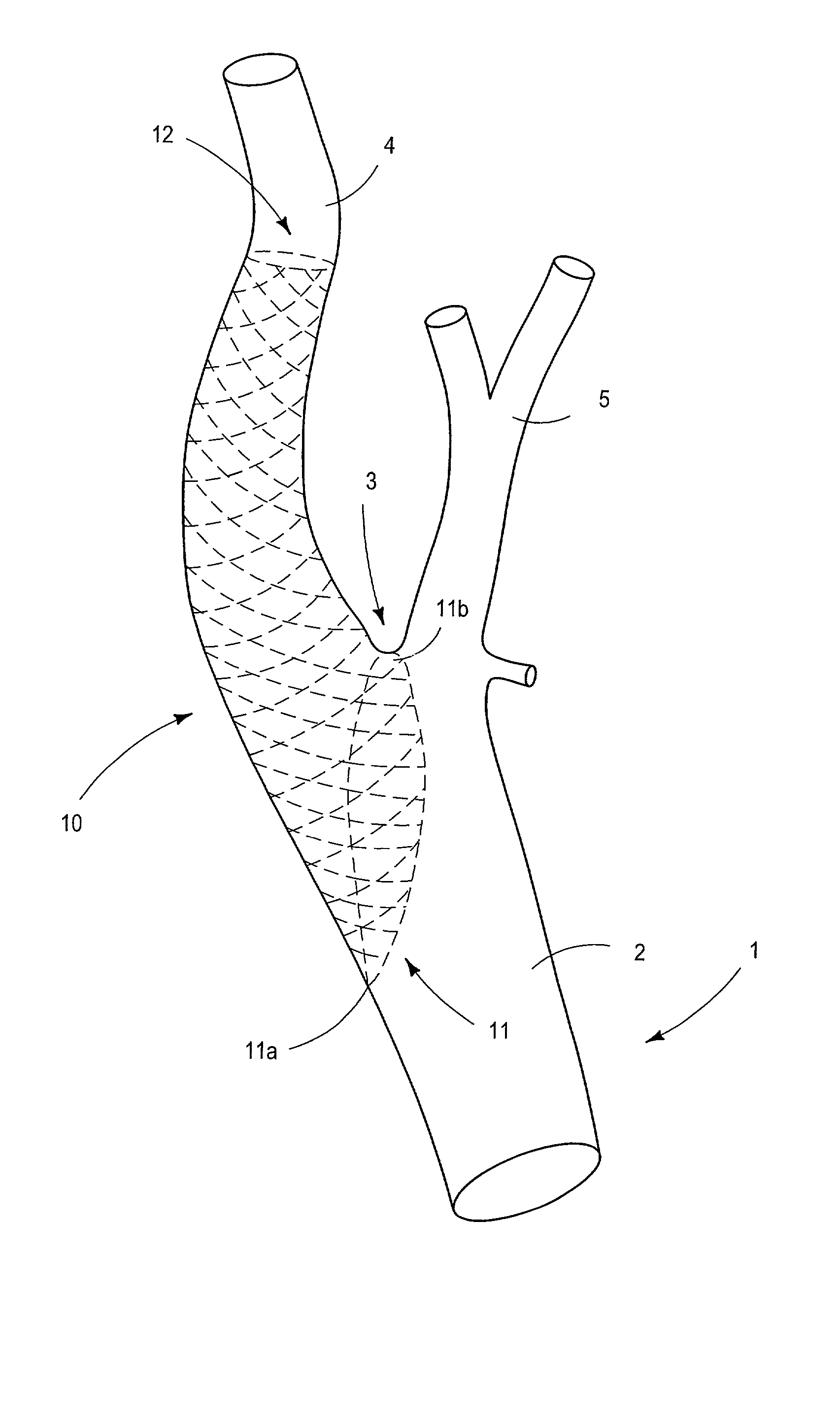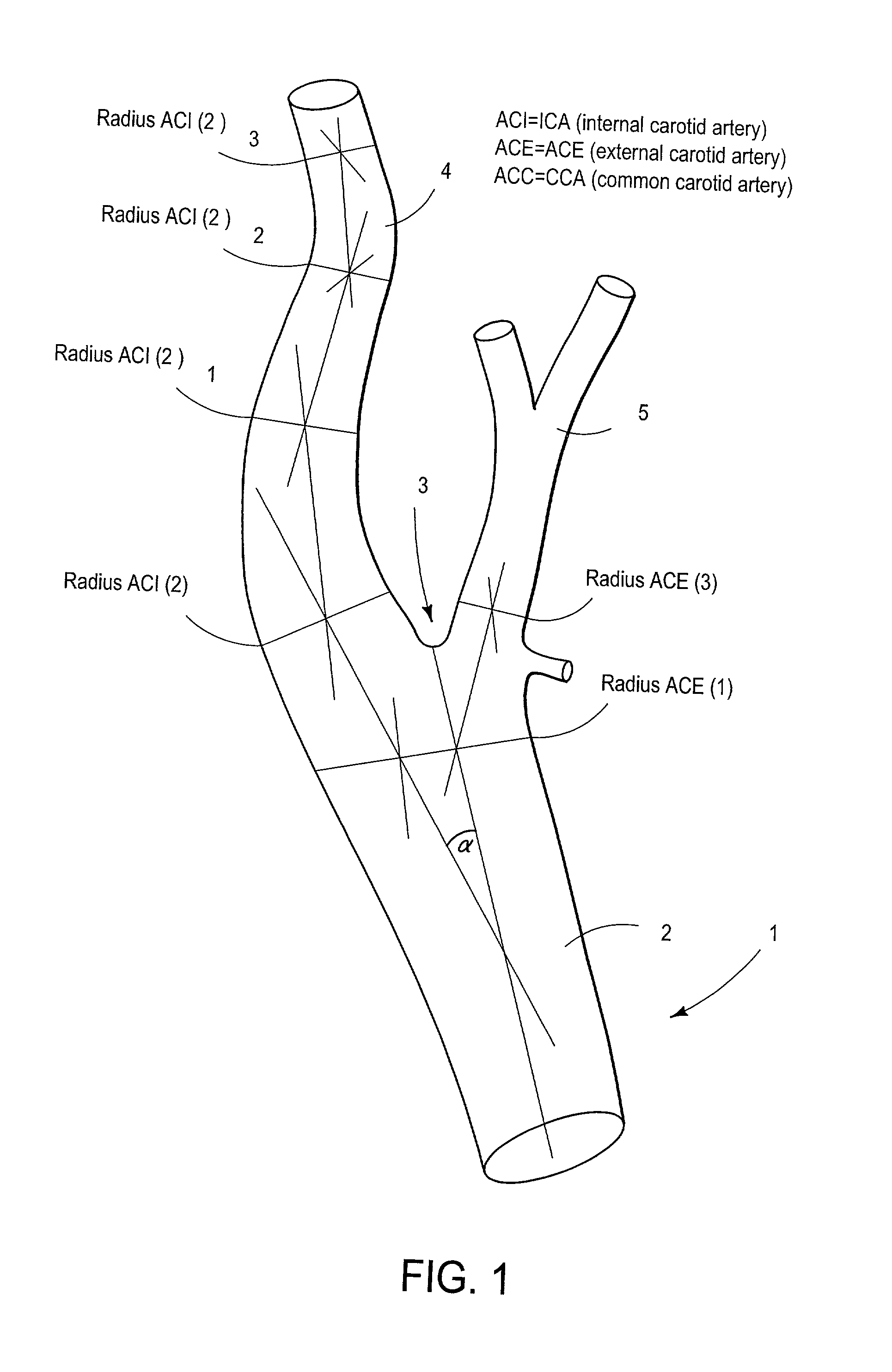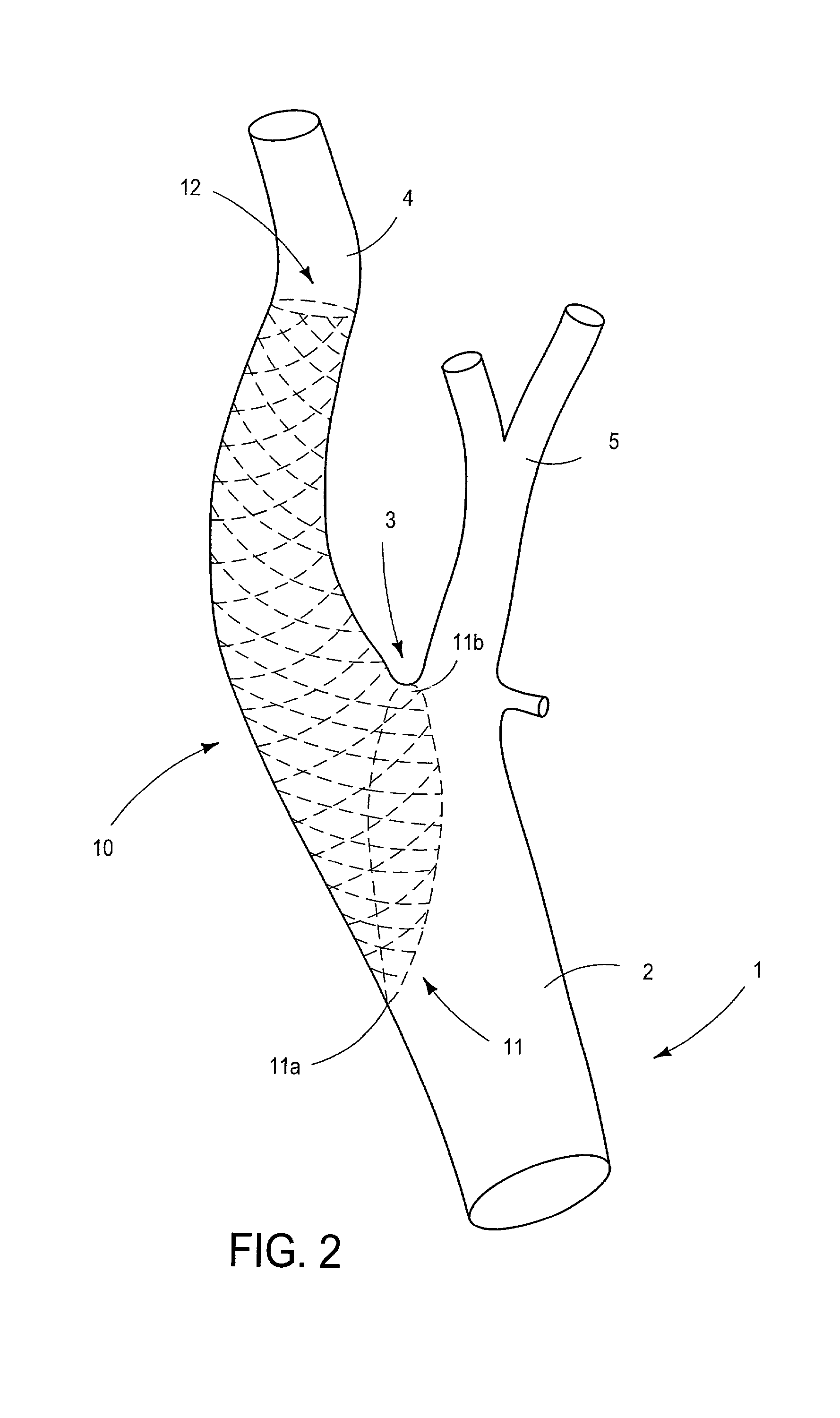Virtual stent making process based upon novel enhanced plate tectonics derived from endoluminal mapping
a technology of enhanced plate tectonics and which is applied in the field of virtual stent making process based upon novel enhanced plate tectonics derived from endoluminal mapping, can solve the problems of difficult comparison of the safety and efficacy of endovascular procedures, the risk of embolic events in patients with unstable (ulcerating) plaque morphologies, and the only suitable or even unsuitable stent for implantation of conventional s
- Summary
- Abstract
- Description
- Claims
- Application Information
AI Technical Summary
Benefits of technology
Problems solved by technology
Method used
Image
Examples
examples
Materials & Methods
[0055] 118 carotid bifurcation samples were harvested from autopsies and respective packets of individuated data points arrayed in a specialized database (EXCEL.RTM., Microsoft Corporation, Redmond, Wash. State, U.S.A.) including relevant information from the autopsy register about the cause of death and underlying illnesses in addition to sample side (right versus left) and all height and weight data.
[0056] Casts were prepared from the harvested vessels by suspending them, suitabley prepared at a suspension facility, in the direction of flow. The vessels were then drained with a fast-hardening plastic (PALADUR R, Heraeus Kulzer GmbH, Wehrheim, Germany), and cured for 1 / 3 of an hour at approximately 23 degrees Celcius. The resulting hardened cast preparations were compared with the harvested vessels, which were preserved in formalin, cataloged and anterior / posterior projections documented photographically.
[0057] Calliper gauge measurements were taken (MITUTOYO.RTM...
second embodiment
[0087] FIG. 6 shows a schematic view of stent 20 made from cast made from a set of data points from carotid arteries modeled on a computer-aided design system. The reference designators denote the same elements.
[0088] Turning now to FIG. 7 a digital photographic image comprising a virtual stent according to an embodiment of the process of the present invention, the same being generated by plotting at least about 500,000 data points within a carotid application is shown which corresponds to the schematic in FIG. 6.
[0089] FIG. 8 likewise is a digital photographic image of a plan view of an embodiment schematically mapping a virtual stent with computer-aided-design with respect to an embodiment as shown in FIG. 3 above. It is noted that applicant contemplates the use of any number of different stent scaffolding materials or patterns as discussed above.
[0090] FIG. 9 is also a digital photographic image of a rotated and carotid bifurcation orientated view of an embodiment schematically m...
PUM
 Login to View More
Login to View More Abstract
Description
Claims
Application Information
 Login to View More
Login to View More - R&D
- Intellectual Property
- Life Sciences
- Materials
- Tech Scout
- Unparalleled Data Quality
- Higher Quality Content
- 60% Fewer Hallucinations
Browse by: Latest US Patents, China's latest patents, Technical Efficacy Thesaurus, Application Domain, Technology Topic, Popular Technical Reports.
© 2025 PatSnap. All rights reserved.Legal|Privacy policy|Modern Slavery Act Transparency Statement|Sitemap|About US| Contact US: help@patsnap.com



